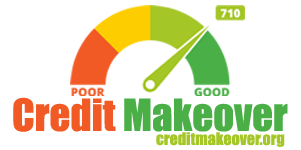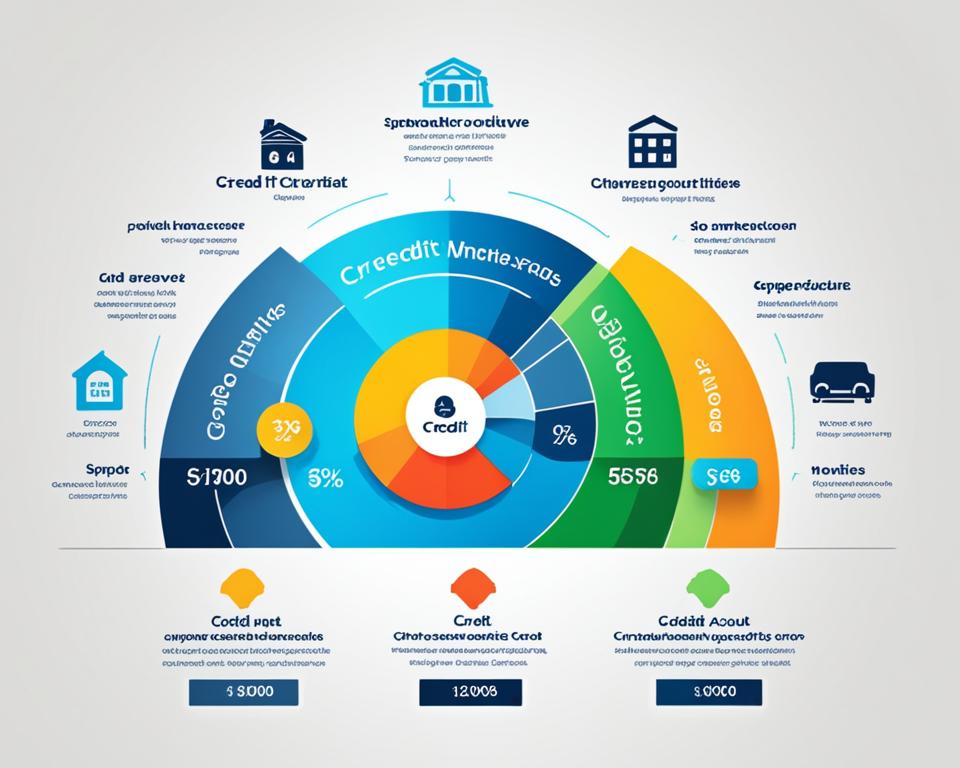As Americans face increasing credit card balances, the quest for effective strategies to pay off credit card debt has never been more urgent. Escaping the clutches of high interest rates and mounting monthly dues is achievable with a disciplined approach to debt management. This guide offers vital credit card debt reduction tips and insights into paying down credit card balances, empowering individuals to navigate the path to financial liberty with confidence and clarity.
Key Takeaways
- Develop a strong repayment plan focusing on high-interest cards to avoid compounding interest.
- Employ the snowball method for immediate successes, encouraging continued debt reduction efforts.
- Exceed minimum monthly payments to tackle principal amounts and reduce overall interest.
- Consider the merits of debt consolidation to secure lower interest rates and simplify payments.
- Streamline finances by targeting one credit card at a time while managing minimum payments on others.
- Stay persistent and disciplined with a strategic approach to confidently achieve a debt-free status.
Understanding Credit Card Debt
When delving into the realm of credit card debt, it’s imperative to grasp the intricacies that contribute to the growing balance on your statement. Much more than just the result of expenditures, credit card debt is influenced by lender-specific factors and individual usage habits. Unveiling these elements, from APR to interest compounding, equips consumers with the knowledge necessary to craft informed credit card payoff strategies.
The Impact of APR on Your Debt
The APR on credit card debt represents the yearly cost you’ll pay for borrowing; this is not just a mere percentage but a pivotal factor in the overall expense of your indebtedness. Credit card APRs are notorious for their high rates, often falling anywhere between 15% to a staggering 30%. This cost of borrowing can make a significant difference in the speed and strategy required for successfully paying down your balances.
How the Compounding Interest Expands the Debt
Compound interest is the dark horse of credit card debt, often underestimated in its ability to balloon your balances. Unlike simple interest, which is calculated on the initial principal alone, compound interest charges are based on the initial principal and the accumulated interest from previous periods. This means that each day, your credit card debt grows slightly larger, creating a snowball effect that can silently inflate your debt to unsettling heights.
| Concept | Definition | Impact on Debt |
|---|---|---|
| APR (Annual Percentage Rate) | The annual rate charged for borrowing on your credit card. | High APRs can significantly increase debt due to higher interest charges over time. |
| Compound Interest | Interest calculated on the initial principal and also on the accumulated interest from previous periods. | Can lead to debt growing exponentially, as each day’s interest adds to the principal balance. |
| Credit Card Payoff | Strategies implemented to pay off credit card debt. | Effective payoff strategies like paying above the minimum or targeting high APR cards first can mitigate the compound interest effect. |
As a borrower, it’s crucial to employ credit card payoff strategies that combat the adverse effects of high APR and compound interest. Understanding these concepts is the first essential step towards liberating yourself from the burdens of credit card debt.
Initial Steps Towards Debt Reduction
Embarking on the journey to reduce credit card debt demands understanding and revising your financial landscape. The first stride in devising effective debt repayment methods is dissecting and optimizing your budget. By uncovering and reconfiguring your spending habits, a door opens to reroute funds toward managing and clearing credit card debt, rather than sinking further into it.
To outline a budget that genuinely works, take a detailed inventory of your monthly income against your expenditures. Scrutinize each area of spending; often, there are overlooked opportunities for cost-saving. Perhaps there’s a subscription you no longer need or a habit that is more of a want than a need. These are the expenditures that can be redirected to reduce credit card balances more rapidly.
Consider this scenario where entertainment, dining out, and subscription services collectively drain a substantial portion of your budget. It is these categories where strategic cuts could free up a significant amount to be reallocated to your credit card debt.
- Minimize dining out expenses by planning meals and cooking at home.
- Cut out non-essential subscriptions.
- Redirect entertainment funds to pay down the credit card with the highest interest rate.
With these initial sustainable measures, your refined budget becomes the cornerstone of debt reduction. It becomes more than a monetary structure—it embodies a commitment to financial stability and freedom. By redirecting superfluous spending into an aggressive debt repayment strategy, you set the stage not only to manage but conquer your credit card debt.
Progress requires consistency and the diligence to stick to your outlined budget. The act of routine monitoring and adjusting your spending behavior ensures that every dollar saved is a dollar that brings you closer to a zero balance. This foundational approach fortifies your financial position, preparing you for advanced debt repayment strategies.
Effective debt management starts not with a grand gesture, but with consistent, focused action on rechanneling funds and tracking every expense.
Now that you’ve laid the groundwork for your debt repayment journey, remember that discipline is key. The culmination of these initial budgeting efforts and habit adjustments creates the momentum required to sustain harder-hitting strategies to reduce and ultimately eradicate your credit card debt.
Strategies for Paying Off Credit Card Debt
Eliminating credit card debt is a common financial goal for many individuals, and there are proven strategies that can aid in this endeavor. Tackling high-interest credit cards and utilizing the snowball method stand out as two effective tactics. These approaches, when implemented prudently, can expedite the process of becoming debt-free.

Target High-Interest Cards First
Paying off credit card debt efficiently often involves an initial focus on high-interest credit cards. By directing extra payments towards these cards, you substantially lower the amount of interest accrued over time. This approach not only reduces the total cost of your debt but also shortens the payoff timeline. Use the information provided in your credit card statements to identify which of your cards have the highest APRs, and target those for accelerated repayment.
Optimizing the Snowball Method
The snowball method is another renowned strategy for debt reduction, promoting small yet quick wins that motivate individuals to continue their efforts. It involves first clearing off debts with the smallest balance, thereby creating momentum as you cascade the payments towards larger debts. The psychological boost achieved when a debt is fully paid can be instrumental in persistent debt reduction efforts. Below is a table illustrating how both strategies can be compared and optimized.
| Credit Card Debt Reduction Strategy | Description | Advantages | Considerations |
|---|---|---|---|
| High-Interest Rate Focus | Repay cards with the highest APR first to save on cumulative interest. | Minimizes total interest paid and reduces overall debt more quickly. | Requires discipline not to neglect lower interest cards while targeting the high APR cards. |
| Snowball Method | Start with the smallest balances to gain momentum. | Offers immediate gratification from paying off accounts and encourages continued debt reduction. | May lead to paying more interest long-term if smaller debts have lower interest rates compared to larger debts. |
Using these credit card debt reduction tips, you can formulate a plan suited to your financial situation. Whether it’s focusing on the high-interest credit cards to save on interest or deploying the snowball method for its psychological benefits, the outcome of a strategic and disciplined approach can be a debt-free future.
Crafting a Budget to Tackle Debt
When it comes to budgeting for debt repayment, a meticulous assessment of your financial landscape is a precursor to liberation from credit card debt. One of the best practices for paying off credit card debt starts with a clear-eyed view of your current spending, identifying where to cut back, and redirecting those savings to pay down balances. This process involves scrutinizing category-specific expenses such as groceries, transportation, and entertainment, to reveal areas receptive to thrift.
Utilizing categorized data from credit card statements can magnify your visibility into your spending habits, paving the way for targeted budget adjustments. Strategic reallocation of funds from identified cutback areas manifests as additional payments toward your credit card balances, incrementally dismantling the debt with disciplined precision.
| Expense Category | Monthly Spending | Potential Savings | Application to Debt |
|---|---|---|---|
| Groceries | $600 | $100 | Increase credit card payment by $100 |
| Entertainment | $300 | $150 | Redirect to highest interest card |
| Dining Out | $250 | $100 | Pay above the minimum due |
The above table is an example of how modifying your spending within each category can free up cash that directly supports your debt repayment strategy. A focus on cutting entertainment and dining out expenses by a modest percentage allows for a considerable amount to be funnelled into credit card payments—a strategy more impactful than many initially imagine.
- Revisit subscriptions and recurring expenses to see what can be eliminated.
- Investigate cost-saving measures in necessary expenditures, like utility costs or car insurance.
- Commit to a strict grocery budget to prevent frivolous purchases.
- Allocate extra funds at the end of each month to debt, rather than considering them discretionary.
Embarking on the journey of disciplined debt repayment requires not only actionable strategies but also a staunch commitment to adherence. Crafting and following a budget is the foundational step that guides you from the quagmire of debt towards the solid ground of financial stability.
Remember, each dollar saved in your monthly budget and redirected towards your credit card debt is a step closer to financial freedom.
This budgeting journey illuminates the pathway for methodical repayment and ultimately leads to the empowering realm of debt-free living.
Making More Than Minimum Payments
When considering ways to eliminate credit card debt, surpassing the minimum monthly payments is more than just a suggestion—it’s a strategic move that targets the core of the issue. Paying down credit card balances requires an understanding that the minimum payment is essentially the smallest step one can take; it covers interest and only slivers away at the principal debt.
Understanding the vicious cycle that minimum payments perpetuate is the first step towards breaking free from debt. Each month, a portion of the minimum payment goes towards interest, with a minor amount applied to the principal. This balancing act heavily leans towards paying off interest rather than significantly reducing the actual borrowed sum.
Consistently paying more than the minimum due each month is akin to chiseling away at a mountain with a jackhammer instead of a pickaxe; the progress is faster, and the results are more substantial.
To quantify the impact of this strategy, consider the difference in duration and interest paid when paying only the minimum versus paying higher than the minimum. The evidence clearly favors the latter.
| Credit Card Balance | Minimum Payment | Payment Above Minimum | Total Interest Saved | Time Saved |
|---|---|---|---|---|
| $5,000 | $150 | $250 | $620 | 1 year |
| $10,000 | $300 | $500 | $1,380 | 2 years |
| $15,000 | $450 | $750 | $2,070 | 3 years |
The table above showcases the tangible benefits of increasing your monthly payments above the minimum required. This method allows consumers to take charge of their financial destinies, significantly reducing the time and money spent on credit card liabilities.
- Allocate a portion of unexpected financial windfalls, like tax refunds, to credit card payments.
- Regularly review your budget to find opportunities to reallocate funds toward higher credit card payments.
- Identify and eliminate non-essential expenses to boost your monthly repayment capacity.
- Set automatic payments for an amount higher than the minimum to ensure consistency.
The key to utilizing this strategy effectively lies in discipline and the conscious redirection of funds towards your debts. By making deliberate efforts to pay extra each month, you expedite the journey to financial solvency and resilience.
Debt Snowball vs. Debt Avalanche
When it comes to credit card payoff strategies, the debate often centers around the debt snowball method versus the debt avalanche method. Both approaches have valid applications, but they differ significantly in their methodologies and psychological impacts. By understanding the nuances of each, individuals can select the most appropriate strategy to manage and reduce their credit card debt efficiently.

Pros and Cons of the Snowball Method
Gaining momentum in debt reduction is a critical psychological milestone, and the debt snowball method capitalizes on this by targeting the smallest debts first. This method provides the immediate gratification of paying off accounts, which can be incredibly motivating for individuals struggling with multiple debts. Below is a quick overview of the advantages and drawbacks associated with this method.
| Aspect | Pros | Cons |
|---|---|---|
| Psychological Impact | Provides quick wins, boosting morale and encouraging persistence. | May lead to complacency after initial debts are cleared. |
| Interest Accumulation | Less focus as debts are targeted by balance size, not interest rate. | Potential to accrue more interest over time if larger debts have higher rates. |
| Overwhelm Reduction | Lessens the feeling of being overwhelmed by numerous debts. | Does not address the need to strategize around interest rates. |
While the debt snowball method contributes to a sense of accomplishment, it could mean paying more in the long run due to not prioritizing the interest rates.
Pros and Cons of the Debt Avalanche
The debt avalanche method takes a more calculated approach by focusing on repaying debts with the highest interest rates first. This strategy is financially savvy, as it aims to minimize the overall interest payments. See below for a concise analysis of the positives and negatives associated with the debt avalanche method.
| Aspect | Pros | Cons |
|---|---|---|
| Interest Savings | Maximizes savings on total interest paid. | Can be discouraging if high-interest debts have large balances. |
| Repayment Efficiency | Debt is reduced in a financially optimal order. | Lacks the quick successes found in the snowball method. |
| Long-Term Benefits | Offers significant financial benefits over time. | Motivation may wane without the immediate elimination of debts. |
The debt avalanche method is advantageous for those who are driven by cost savings and can maintain motivation without the immediate closure of accounts. When considering credit card payoff strategies, the decision between the snowball and avalanche methods should align with one’s financial situation and personal preferences regarding debt management.
Tackling Debt with Debt Consolidation
When spiraling credit card debt becomes an overwhelming force in one’s financial life, debt consolidation emerges as a beacon of hope. This process involves consolidating multiple high-interest debts into a single obligation, typically with a lower rate, making it a vital tactic for individuals who seek to regain control over their finances and reduce their monthly outgoings.
Balance Transfers and Their Benefits
Among the popular methods of debt consolidation, balance transfer credit cards are a highly recommended option. These cards allow you to shift high-interest credit card balances to a new card that offers a lower introductory APR—sometimes even as low as 0%. The initial savings can be substantial; however, it’s essential to be mindful of potential balance transfer fees, which typically range from 3% to 5%. The strategic use of a balance transfer card can significantly reduce the amount paid in interest, so long as the balances are paid off before the conclusion of the promotional period.
Secured Loans for Lower Interest Rates
Secured loans represent another pathway to debt consolidation, with home equity lines of credit (HELOCs) being a common form. These loans are backed by collateral, often the borrower’s home, which can result in a considerably lower interest rate than unsecured credit card debt. Yet, despite the appeal of reduced rates, one must proceed with caution due to the potential risks involved, such as closing costs and the dire possibility of foreclosure in the worst-case scenario of default. The decision to leverage secured loans for debt consolidation should always be accompanied by a robust plan to prevent further debt accumulation, safeguarding the borrower’s financial future.
Revising Spending Habits to Free Up Funds
Addressing credit card debt reduction tips begins with a candid appraisal and consequent adjustment of spending habits. Transforming these habits is not merely a temporary remedy but a robust strategy for managing and clearing credit card debt. It necessitates a shift from reliance on credit to more prudent forms of payment like cash or debit, thereby curtailing the propensity for overspending.
By eschewing the convenience of credit cards for everyday purchases, consumers gain a lucid perspective on their actual financial inflow and outflow, ensuring that every expenditure is deliberate and justified.
To facilitate this transformation, consumers are encouraged to undergo a thorough analysis of their monthly expenditures to detect areas prone to extraneous spending. Thus, identifying such patterns is the first step to redirecting these funds toward paying off existing credit card balances, significantly aiding in credit card debt reduction efforts.
The table below outlines general spending categories and suggests adjustments to free up funds for debt repayment:
| Category | Current Spend | Proposed Cutback | Monthly Savings | Debt Repayment Boost |
|---|---|---|---|---|
| Dining Out | $400 | $100 | $300 | Additional payment to credit card debt |
| Subscriptions/Streaming | $120 | $50 | $70 | Excess goes to highest APR card |
| Impulse Purchases | $150 | $150 | $0 | Switch to planned spending only |
| Luxuries/Non-essentials | $200 | $100 | $100 | Allocate to next smallest debt (snowball method) |
By reallocating resources from discretionary to mandatory use, such as debt payment, consumers can solidify their budgets and enhance their financial fortitude.
- Setting up a cash-only envelope system for variable expenses such as groceries and entertainment.
- Using budgeting apps to automatically categorize spending and identify excessive expenditure.
- Directing any saved funds to an emergency reserve or to paying off credit card debts more swiftly.
- Embracing minimalism to reduce the urge to purchase non-essential goods, thereby freeing up finances for debt clearance.
Overall, reevaluating spending habits is a comprehensive approach to capitalizing on available funds for credit card debt reduction and instigating responsible financial management tactics that yield enduring benefits.
Leveraging Balance Transfer Credit Cards
Exploring balance transfer credit cards is a pivotal approach among the smart ways to eliminate credit card debt. These financial tools offer an attractive prospect: the ability to consolidate and transfer high-interest credit card balances to a new credit card with a significantly lower introductory APR, often 0%. This strategy is particularly effective for individuals committed to quickly offsetting their debts and could potentially save a considerable sum that would otherwise go toward interest.

However, this window of opportunity is usually bound by a timeline, with the low or zero interest rates expiring after a set introductory period—commonly 12 to 18 months. It’s crucial to capitalize on this time frame to make substantial headway in paying down the principal balance. Therefore, crafting a payment plan before the honeymoon phase of the lower APR concludes is imperative in avoiding a rebound into higher interest rates and additional fees.
Another factor to calculate into the debt repayment strategy are any balance transfer fees, typically ranging from 3% to 5%, which might accompany the transfer. While these fees impact the overall savings, they often pale in comparison to the potential interest accrued on an existing high-APR credit card.
Paying attention to the fine details and planning are key when utilizing balance transfer credit cards to ensure they serve as a bridge towards debt freedom, rather than a pitfall back into the cyclical trap of high-interest debt.
To illustrate the impact of balance transfers, let’s consider the following scenario:
| Current Credit Card APR | Balance Transfer Credit Card APR (Introductory) | Balance Transfer Fee | Potential Interest Savings |
|---|---|---|---|
| 22% | 0% | 4% | $880 per year on a $4,000 debt |
| 18% | 0% | 3% | $540 per year on a $3,000 debt |
| 15% | 0% | 5% | $450 per year on a $3,000 debt |
The table clearly demonstrates the potential savings when shifting high-interest credit card debt to a balance transfer card with a 0% introductory rate, even after accounting for the transfer fee. The key to successful use of balance transfer credit cards lies in the vigilant execution of repayment before the termination of the low APR period. Achieving this means emerging from credit card debt faster and with significantly less financial strain than if the balances remained on higher-APR cards.
- Analyze and compare balance transfer credit card options, focusing on low introductory APRs and transfer fees.
- Calculate the savings possible with a balance transfer, considering the fees against potential interest on existing debts.
- Develop a stringent repayment plan to maximize the benefit of the introductory APR period.
- Avoid new debt accumulation on both the balance transfer card and any existing cards to effectively conquer credit card debt.
Ultimately, the strategic use of balance transfer credit cards can be a powerhouse move in your financial toolkit for combating credit card debt. With careful planning and disciplined execution, it enables borrowers to navigate the road to fiscal solvency more efficiently and affordably.
Home Equity and Credit Card Debt
Navigating the waters of credit card debt can often lead to exploring various consolidation methods, one of which is leveraging home equity. By utilizing home equity loans for debt consolidation, many find a viable route towards credit card debt reduction. Strategic employment of these loans can present a cost-effective alternative due to their typically lower interest rates compared to those associated with credit card liabilities.
Using Home Equity Loans Wisely
Strategically employing a home equity loan can offer a lifeline for those swamped by high-interest credit card debts. The essence of using home equity loans wisely lies within the art of conversion—transforming volatile, high-APR credit card debts into a single, stable loan with lower interest rates. This astute move can result in a more favorable monthly payment scenario, allowing borrowers to channel funds more efficiently towards reducing their debt burden.
Educated financial decisions backed by a concrete repayment plan enhance the advantages of utilizing home equity for debt relief purposes.
Risks Involved with Home Equity Debt Consolidation
Despite their apparent allure, home equity loans for debt consolidation are not void of risks. Like any financial undertaking, they encompass elements that require careful consideration. The most palpable of these risks is potentially losing one’s home—a consequence of defaulting on loan payments, given that the loan is secured by the property itself. Therefore, understanding these caveats is indispensable for anyone contemplating a home equity loan as a credit card debt reduction strategy.
It’s imperative to integrate risk awareness with prudent planning when consolidating credit card debt through home equity loans.
In conclusion, home equity loans can be a robust mechanism for credit card debt reduction, subject to strategic and informed utilization. Weighing the cost-saving benefits against the inherent risks involved is a critical part of the decision-making process, ensuring that such financial decisions are executed with foresight and responsibility.
Financial Windfalls and Debt Repayment
Experience has shown that the arrival of financial windfalls, including bonuses, tax refunds, and raises, can serve as a critical pivot point in the struggle against credit card debt. Far too often, these unexpected gains are absorbed into everyday spending, evaporating without significantly impacting one’s financial trajectory. But when channeled into effective debt repayment methods, such windfalls can compress timeframes for achieving debt freedom and create a lasting impact on one’s financial health.
The decision to allocate financial windfalls towards credit card balances, particularly those with higher interest rates, could potentially save thousands in compounded interest. Consider the difference a single substantial payment makes: It doesn’t just lower the principal balance; it also reduces the amount of interest accruing each month thereafter. This tactic magnifies every future payment’s effectiveness, akin to lifting a weight that becomes lighter with every step taken towards clearing the balance.
Utilizing financial windfalls as leverage against debt is not just an action—it’s an investment in a financially stable future, liberating funds that can contribute to other savings or investment opportunities once debts are settled.
It’s crucial, however, to approach this windfall strategy with foresight and planning. An unexpected bonus can feel like free money, but when applied prudently to debt, it reflects a commitment to financial discipline and foresightedness. As such, one should not await such windfalls passively; instead, proactively adjust your debt repayment plan to incorporate these funds should they arise, thus maintaining a robust strategy for accelerated debt reduction.
- Assess and adjust your budget to accommodate windfalls for debt reduction rather than daily spending.
- Prioritize applying windfalls to high-interest debts to maximize the benefit of each dollar.
- Continue standard debt repayment plans without considering windfalls, so they represent a bonus reduction when utilized.
Through the strategic use of financial windfalls, the journey toward financial freedom is not only shortened but also empowered. This effective debt repayment method holds the potential to transform seemingly unmanageable credit situations into tales of triumph over debt.
Engaging with Credit Card Providers for Flexible Solutions
Negotiation with credit card providers can be a pivotal step in managing and clearing credit card debt effectively. In specific financial situations where consumers face hardships, credit card companies may offer a compassionate ear and a willingness to find workable solutions. These custom solutions could potentially include the deferral of payments, or even a reduced interest rate, making the journey to a debt-free life less arduous.
Many people might not realize that opening a dialogue with creditors can lead to alternatives that alleviate the burdens associated with high credit card balances. It’s about fostering a cooperative relationship where both parties seek a fair resolution. Creditors are often receptive to discussions regarding payment plans that suit your financial circumstances, which can reduce financial stress and aid in maintaining credit health. Qualifications for such concessions typically hinge on a thorough assessment of the debtor’s comprehensive financial picture, recognizing the benefits of amicable terms over the complexities of non-payment.
While it might seem daunting to approach such negotiations, the long-term advantages of amended repayment terms can be instrumental. The key is to approach this engagement with preparation, understanding the importance of the interaction, and the overall impact it can have on your financial recovery.
Engaging proactively with credit card companies to negotiate terms can substantially alter the course of your debt management journey, providing flexible solutions that support sustainable financial health.
To illustrate the benefits of engagement with credit card providers, consider the following hypothetical scenarios:
| Original Terms | Negotiated Terms | Impact on Debt Management |
|---|---|---|
| 20% APR | Reduced to 15% APR after negotiation | Lower interest rates can significantly decrease the amount owed over time. |
| Monthly payment of $200 | Deferral granted for 2 months, resuming payments thereafter | Temporary relief helps manage cash flow during financial hardship. |
| Non-negotiable late fees | Late fees waived for the duration of financial hardship | Waiving fees can reduce the overall debt burden, making it easier to catch up on payments. |

The strategies for engaging with credit card companies are manifold but effectuating any sort of beneficial change begins with the initiative to reach out. Tips for such engagements might include:
- Preparing a detailed account of your financial status to show your current situation.
- Stating your intention to pay and your need for some flexibility to do so effectively.
- Asking for specific payment options such as reduced interest rates or payment plans.
- Being polite yet persistent, thoroughly following up until an agreement is secured.
Achieving a compromise with your credit card issuer can transform a seemingly intractable situation into one where you have real hope and a clear pathway to clearing your debt. Transparency, honesty, and readiness to compromise are fundamental in these discussions, fostering an environment in which solutions can be found and credit card debts managed with more agility and less pressure.
Monitoring Credit Scores During Debt Repayment
As individuals embark on the journey of paying off credit card debt, it’s crucial to prioritize the monitoring of credit scores. This vigilant approach not only ensures that credit reports reflect your debt reduction efforts accurately but also serves as a barometer for your financial well-being. Applying best practices for paying off credit card debt is imperative to improving credit scores over time. Consequently, frequent checks to your credit reports are essential for spotting discrepancies that could unfairly impact your credit standing.
Regular reviews of credit history provide an opportunity to understand the effects of your financial activities on your credit scores. As payments are made towards credit card balances, it’s expected that credit utilization—a significant factor in credit scoring models—will decrease, potentially leading to an improved credit score. However, untimely payments or inaccuracies can paint an unfavorable picture, highlighting the need for meticulous oversight.
Engaging in best practices for credit card debt repayment includes not only diligently paying off balances but also ensuring that each successful payment translates to a positive uptick in your credit scores. Keeping close tabs on your credit report can help you navigate towards financial recovery and rebuild a robust credit profile.
Effective credit management is a multi-faceted endeavor. One important facet is maintaining an accurate record of your financial transactions and their impact on your credit scores. It’s wise to leverage the tools provided by credit reporting agencies and personal finance platforms that offer credit monitoring services. These resources can alert you to changes in your credit score, provide insights into which debts to prioritize, and give detailed analyses of the progress you’ve made.
By incorporating regular credit score monitoring into your debt repayment plan, you effectively secure your financial standing while forging a path toward debt independence.
Incorporating credit score monitoring into your financial routine is more than a mere recommendation—it’s a best practice for anyone committed to paying off credit card debt responsibly and efficiently. This proactive approach allows for early detection of potential issues, guides informed financial decisions, and supports the overarching goal of credit score improvement.
- Check credit reports at regular intervals to track changes and updates.
- Identify and dispute any inaccuracies found on credit reports promptly.
- Observe the impact of debt repayments on credit utilization and credit score.
- Use credit monitoring tools for real-time updates on credit score dynamics.
Ultimately, by embracing the practice of consistent credit score monitoring, you underline a commitment to not just clearing your debt, but also to enhancing your financial literacy and nurturing your long-term financial health.
Adjusting Your Financial Lifestyle for Long-Term Benefits
To ensure a flourishing financial future, one must consider making meaningful adjustments to their spending habits. To adjust financial lifestyle is not merely to enact temporary changes; it is to embrace a renewed philosophy on money management that prioritizes long-term stability over momentary pleasures. Engaging in informed, long-term debt management requires this kind of fundamental shift, acknowledging the impact of each financial decision on your economic health.
Individuals who aim to maintain a debt-free existence recognize the importance of evaluating every purchase. Opting for cash transactions rather than credit can significantly reduce impulsive buying, reinforcing the connection between actual funds and expenditure. Furthermore, by setting up budgeting systems that promote savings and regulate spending, one can ensure that outgoings never exceed the limits of their income.
Financial prudence does not equate to self-deprivation. Rather, it fosters an awareness of the pivotal role that thoughtful spending plays in accomplishing enduring financial well-being. When one aligns their expenses with their income, not only does this create a buffer against unforeseen financial strains, but it also builds a resilient foundation resistant to the seductive ease of credit card spending.
Here are practical steps to adjust your financial lifestyle:
- Prioritize building an emergency fund to cover unexpected expenses.
- Create a budget that reflects your financial goals, and stick to it.
- Avoid using credit cards for purchases that can’t be paid off in full each month.
- Adopt a saving mindset by proactively setting aside money on a regular basis.
- Invest in financial education to better understand interest rates, lending, and investment options.
As you build and revise your financial strategies, consider the following table, which provides a clear framework for crafting a lifestyle conducive to responsible spending and effective long-term debt management.
| Financial Habit | Old Approach | New Approach | Impact on Long-Term Financial Health |
|---|---|---|---|
| Spending Method | Using credit for everyday purchases | Using cash or debit to limit spending | Reduces reliance on credit cards, limits interest accumulation |
| Budgeting | Loose tracking of expenditures | Detailed, category-specific budgeting | Enhances awareness of spending, identifies areas for savings |
| Saving | Occasional deposits into savings | Regular, automated contributions | Builds a robust emergency fund, prepares for future expenses |
| Credit Card Use | Paying only minimum due | Paying in full or exceeding minimum payments | Avoids long-term interest, improves credit score over time |
| Lifestyle Choices | High spending on wants | Disciplined spending, focused on needs | Prevents debt accumulation, aligns spending with income |
By making these strategic changes, you invigorate your resolve to adhere to a financial plan that consistently nudges you toward a future devoid of debt burdens. It is the pursuit of a lifestyle that appreciates the value of money, sees beyond the present moment, and anticipates the far-reaching consequences of today’s financial decisions. Adjusting your financial lifestyle accordingly is not just an act of self-improvement; it’s an investment in your future.
Conclusion
In the pursuit of financial autonomy, individuals who face the daunting task of credit card debt must arm themselves with a variety of strategies for paying off credit card debt. The journey to becoming debt-free is paved with deliberate, intentional actions, from targeting debts with the highest interest rates to employing the highly regarded snowball and avalanche methods. Each strategy, while unique in its approach, shares a common goal: to reduce and ultimately eliminate the burden of credit card debt.
Adoption of effective debt repayment methods requires consistent discipline and an awareness that there are no shortcuts to fiscal freedom. This includes adjusting spending habits to prevent new debts from forming while diligently paying down existing ones. Furthermore, engaging constructively with credit card providers can result in flexible repayment solutions tailored to an individual’s specific circumstances, offering much-needed respite and a clearer path forward.
The amalgamation of these credit card debt reduction tips, alongside a steadfast commitment to strategic planning and execution, empowers credit card users to reclaim control of their finances. Through dedicated effort and perseverance, managing and clearing credit card debt becomes not just an aspiration but an achievable reality, marking a milestone on the road to lasting financial health.
FAQ
What strategies can help payoff credit card debt quickly?
Strategies include focusing on high-interest cards first, utilizing the snowball or avalanche method for debt repayment, making more than the minimum payments, considering debt consolidation options, and crafting a budget to systematically tackle the debt. Timely payments and consistent follow-through are essential for these strategies to be effective.
How does the APR on a credit card affect my debt?
The annual percentage rate (APR) on a credit card determines the amount of interest you will pay on any outstanding balance. A higher APR means that you will accumulate more interest, thus increasing your overall debt load if balances are not paid off swiftly.
Why is compound interest important to understand when dealing with credit card debt?
Compound interest on credit card debt means that interest charges are added to the principal balance, and future interest is based on this new, larger balance. This can significantly expand the total amount owed over time, making it crucial to pay off the balance as quickly as possible to avoid large interest accumulations.
What are the first steps I should take towards reducing my credit card debt?
Initial steps include assessing your overall financial situation, creating a stringent budget, and reallocating unnecessary expenditures towards your credit card payments. These steps can help free up funds and give you a clear understanding of how to strategically pay down your debt.
Should I target high-interest credit cards first when paying off my debts?
Yes, targeting high-interest cards first can save you money on interest payments. This method, often called the ‘debt avalanche,’ focuses your funds on the debts that are costing you the most, thereby reducing the total interest paid.
How does the snowball method work for paying off debt?
The snowball method involves paying off debts from smallest to largest, regardless of interest rates. This allows for quick wins, which can boost motivation to continue paying down larger debts. Once a smaller debt is paid off, the funds used for that payment are then directed to the next smallest balance.
What are the pros and cons of using a balance transfer credit card for debt consolidation?
Balance transfer credit cards often provide introductory periods with low or 0% APR, which can be advantageous for reducing interest charges temporarily. However, there are usually fees associated with the transfer, and if the balance is not paid off within the promotional period, high interest rates can apply.
How can secured loans help to manage credit card debt?
Secured loans, like a home equity line of credit, can offer lower interest rates for consolidating high-interest credit card debts. However, they require you to put up collateral (such as your home), and there is a risk of losing the asset if you fail to make repayments.
Why is revising spending habits important for reducing credit card debt?
Revising spending habits can help free up additional funds that can be directed towards paying off credit card debt. It also fosters financial discipline, which is crucial for preventing future debt accumulation.
How do home equity loans compare to other methods of paying off credit card debt?
Home equity loans usually offer lower interest rates compared to credit cards and can be used to consolidate debt into a single payment. The risk involves the potential loss of your home if you’re unable to make loan payments, so it’s important to use this method responsibly.
Can I use a financial windfall to pay off my credit card debt?
Absolutely. Using financial windfalls, such as bonuses or tax refunds, can significantly accelerate the repayment of your credit card debt by directly reducing the principal balance and subsequently the interest.
Is it possible to negotiate with credit card providers for better repayment terms?
Yes, if you are experiencing financial difficulty, some credit card companies may be willing to work with you to adjust your repayment terms. This could include reducing your interest rate or waiving certain fees, but this typically requires a direct negotiation process with the provider.
How does paying off credit card debt affect my credit score?
Paying off credit card debt will typically have a positive effect on your credit score as it lowers your credit utilization ratio, which is a key factor in credit scoring. Moreover, maintaining a history of timely payments contributes positively to your creditworthiness.
What lifestyle changes can support long-term freedom from credit card debt?
Long-term strategies include living within or below your means, avoiding new debt, creating and sticking to a budget, establishing an emergency fund, and using credit cards responsibly. Committing to these habits can help sustain a debt-free life.





